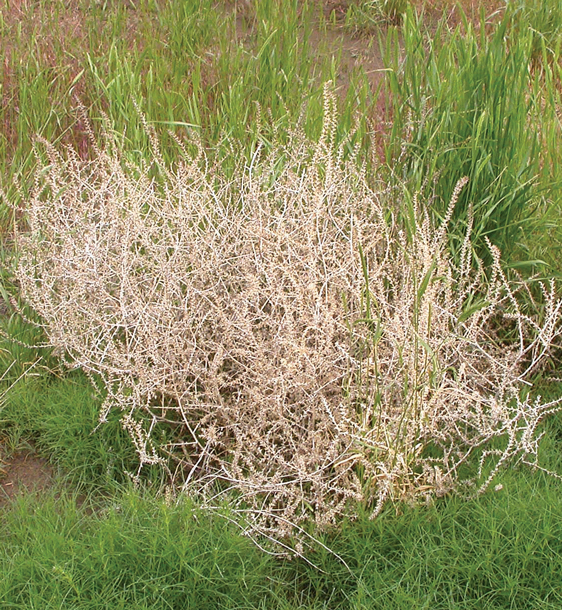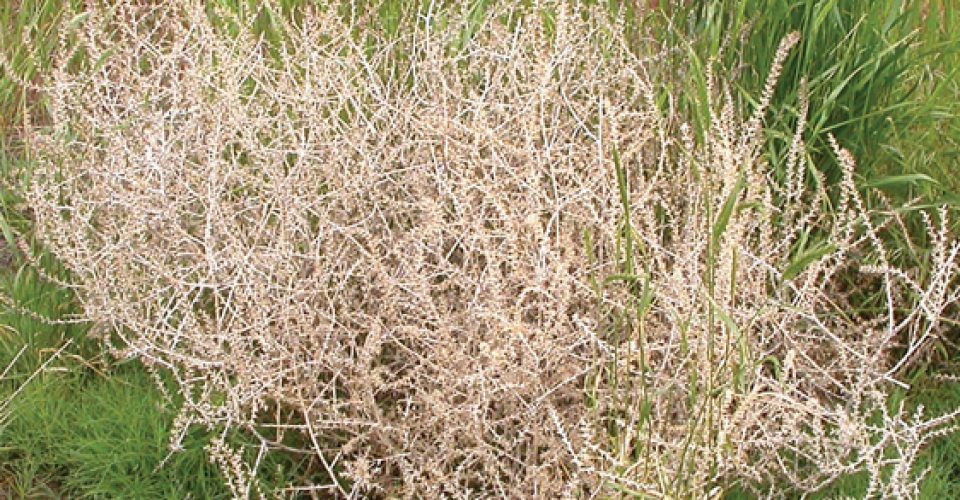Russian Thistle (Salsola tragus, Salsola iberica)
Russian thistle is an annual, many-branched herb growing throughout West Texas and the western regions of the United States.
This plant thrives on disturbed areas, cropland, roadsides and overgrazed rangelands. It is drought tolerant and is a very invasive plant. It is believed to have spread west by railroads and highway traffic, as well as by wind blowing the plant across the landscape. Each plant can produce more than 200,000 seeds.
- Grows from 2 to more than 5 feet in height and forms a round, bushy, stiff plant that has a tendency to “tumble”; a.k.a. “tumbling tumbleweed.”
- Has reddish or purple streaks in the stems.
- Has narrow leaves and, as it matures, becomes stiff, prickly, round and bushy.
- Was brought to the United States in 1873 by Russian immigrants moving to South Dakota. They brought with them flax seed that was contaminated with thistle seed.
Russian thistle can be toxic to livestock in the form of nitrate poisoning. Areas with high concentrations of nitrogen such as heavy fertilized crop fields, concentrated feeding areas like corrals, feedlots and loafing sheds can cause problems. Plants growing in these areas can be grazed by stock, and plants that contain more than 1 percent nitrate can cause death. Livestock should be moved away from these areas to prevent problems.
Russian thistle does have some benefit to wildlife as browse for deer when the plant is young. The seed is also eaten by many species of birds and small mammals.
Russian thistle can dominate rangelands, collect on fencerows and buildings and create traffic problems. It can cause severe fire hazards. It can be controlled by a well-timed application of herbicides. ❚
Editor’s note: Kent Ferguson, retired rangeland management specialist from USDA Natural Resources Conservation Service (NRCS), is providing us with plant identification photo stories to help ranchers identify those forbs, forages and species growing in the pastures. Additional photos provided by USDA NRCS.
Russian Thistle is excerpted from the September 2017 issue of The Cattleman magazine.



